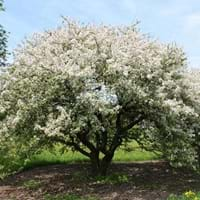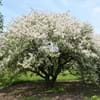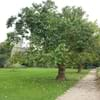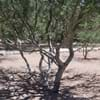Life Span
Perennial
Perennial
Type
Tree
Bulb or Corm or Tuber
Origin
Eastern Asia, Japan
Hybrid origin
Types
Not Available
Not Available
Habitat
Not Available
tropical environments
USDA Hardiness Zone
4-8
8-11
AHS Heat Zone
8-1
Not Available
Sunset Zone
A3, 1a, 1b, 2a, 2b, 3a, 3b, 4, 5, 6, 7, 8, 9, 10, 14, 15, 16, 17, 18, 19, 20, 21
21,22
Habit
Oval or Rounded
Clump-Forming
Flower Color
Not Available
White, Red, Light Pink
Flower Color Modifier
Bicolor
Bicolor
Fruit Color
Red, Yellow
Green, Brown
Leaf Color in Spring
Not Available
Green, Dark Green
Leaf Color in Summer
Not Available
Light Green
Leaf Color in Fall
Not Available
Several shades of Green
Leaf Color in Winter
Not Available
Light Green
Leaf Shape
Oval
Long Linear
Plant Season
Spring
Spring, Summer, Winter
Sunlight
Full Sun
Full Sun, Partial Sun
Growth Rate
Medium
Medium
Type of Soil
Clay, Loam, Sand
Loam, Sand
The pH of Soil
Acidic, Neutral, Alkaline
Acidic, Neutral
Soil Drainage
Well drained
Well drained
Bloom Time
Spring, Late Spring
Not Available
Tolerances
Not Available
Deer resistant
Where to Plant?
Ground
Container, Ground, Pot
How to Plant?
Divison
Divison, From Rhizomes, Tubers
Plant Maintenance
Medium
Low
Watering Requirements
Do not water excessively
Average Water Needs
In Summer
Lots of watering
Lots of watering
In Spring
Moderate
Moderate
In Winter
Average Water
Average Water
Soil pH
Acidic, Neutral, Alkaline
Acidic, Neutral
Soil Type
Clay, Loam, Sand
Loam, Sand
Soil Drainage Capacity
Well drained
Well drained
Sun Exposure
Full Sun
Full Sun, Partial Sun
Pruning
Prune in spring, Requires very little pruning
Cut or pinch the stems, Remove damaged leaves, Remove dead branches, Remove dead leaves
Fertilizers
Doesn't require fertilization when grown in rich soil
as it is a flowering plant, use high phosphorous content fertilizer, Nitrogen, Phosphorous, Potassium, Requires high amount of nitrogen
Pests and Diseases
Healthy tree, Red blotch
Aphids, Grasshoppers, Mealybugs, Mites, Red blotch, Slugs, Snails
Plant Tolerance
Drought
Deer resistant
Flower Petal Number
Not Available
Not Available
Edible Fruit
No
Not Available
Fragrant Flower
Yes
Not Available
Foliage Texture
Not Available
Medium
Foliage Sheen
Not Available
Glossy
Attracts
Not Available
Bees, Butterflies, Hummingbirds
Allergy
Poisonous
poisonous if ingested
Aesthetic Uses
Showy Purposes
Beautification, Bouquets, Cottage Garden, Showy Purposes
Beauty Benefits
Not Available
Not Available
Environmental Uses
Not Available
Not Available
Medicinal Uses
Not Available
Not Available
Part of Plant Used
Whole plant
Flowers
Other Uses
Used as Ornamental plant
Used as Ornamental plant, Used for bedding in gardens
Used As Indoor Plant
No
Yes
Used As Outdoor Plant
Yes
Yes
Garden Design
Feature Plant, Shade Trees, Street Trees, Topiary / Bonsai / Espalier
Container, Cutflower, Houseplant, Mixed Border, Tropical
Botanical Name
Malus floribunda
HIPPEASTRUM 'Picotee'
Common Name
Japanese flowering crabapple, Japanese crab, purple chokeberry, showy crabapple
Florist Amaryllis, Hippeastrum, Picotee Hippeastrum
In Hindi
Japanese crab apple
HIPPEASTRUM
In German
Japanische Wildapfel
HIPPEASTRUM
In French
Pommier du Japon
HIPPEASTRUM
In Spanish
Manzano silvestre japonés
Hippeastrum
In Greek
Ιαπωνικά μήλο καβουριών
Hippeastrum
In Portuguese
maçã de caranguejo japonês
HIPPEASTRUM
In Polish
Japoński krab jabłko
Hippeastrum
In Latin
Japanese crab apple
Hippeastrum
Phylum
Magnoliophyta
Magnoliophyta
Class
Magnoliopsida
Magnoliopsida
Order
Rosales
Asparagales
Family
Rosaceae
Amaryllidaceae
Clade
Angiosperms, Eudicots, Rosids
Angiosperms, Monocots
Tribe
Maleae
Not Available
Subfamily
Amygdaloideae
Amaryllidoideae
Properties of Japanese Crab Apple and Hippeastrum
Wondering what are the properties of Japanese Crab Apple and Hippeastrum? We provide you with everything About Japanese Crab Apple and Hippeastrum. Japanese Crab Apple doesn't have thorns and Hippeastrum doesn't have thorns. Also Japanese Crab Apple does not have fragrant flowers. Japanese Crab Apple has allergic reactions like Poisonous and Hippeastrum has allergic reactions like Poisonous. Compare all the properties and characteristics of these two plants. Find out which of these plant can be used as indoor plant. If you are interested to decorate your house and garden, find out aesthetic uses, compare them and select the plant which will beautify your surrounding. Along with beautification, try comparing medicinal and edible uses of Japanese Crab Apple and Hippeastrum and you can choose the plant having best and most benefits.
Season and Care of Japanese Crab Apple and Hippeastrum
Season and care of Japanese Crab Apple and Hippeastrum is important to know. While considering everything about Japanese Crab Apple and Hippeastrum Care, growing season is an essential factor. Japanese Crab Apple season is Spring and Hippeastrum season is Spring. The type of soil for Japanese Crab Apple is Clay, Loam, Sand and for Hippeastrum is Loam, Sand while the PH of soil for Japanese Crab Apple is Acidic, Neutral, Alkaline and for Hippeastrum is Acidic, Neutral.
Japanese Crab Apple and Hippeastrum Physical Information
Japanese Crab Apple and Hippeastrum physical information is very important for comparison. Japanese Crab Apple height is 610.00 cm and width 370.00 cm whereas Hippeastrum height is 38.10 cm and width 30.10 cm. The color specification of Japanese Crab Apple and Hippeastrum are as follows:
Japanese Crab Apple flower color: Not Available
Japanese Crab Apple leaf color: Not Available
Hippeastrum flower color: White, Red and Light Pink
- Hippeastrum leaf color: Green and Dark Green
Care of Japanese Crab Apple and Hippeastrum
Care of Japanese Crab Apple and Hippeastrum include pruning, fertilizers, watering etc. Japanese Crab Apple pruning is done Prune in spring and Requires very little pruning and Hippeastrum pruning is done Cut or pinch the stems, Remove damaged leaves, Remove dead branches and Remove dead leaves. In summer Japanese Crab Apple needs Lots of watering and in winter, it needs Average Water. Whereas, in summer Hippeastrum needs Lots of watering and in winter, it needs Average Water.





